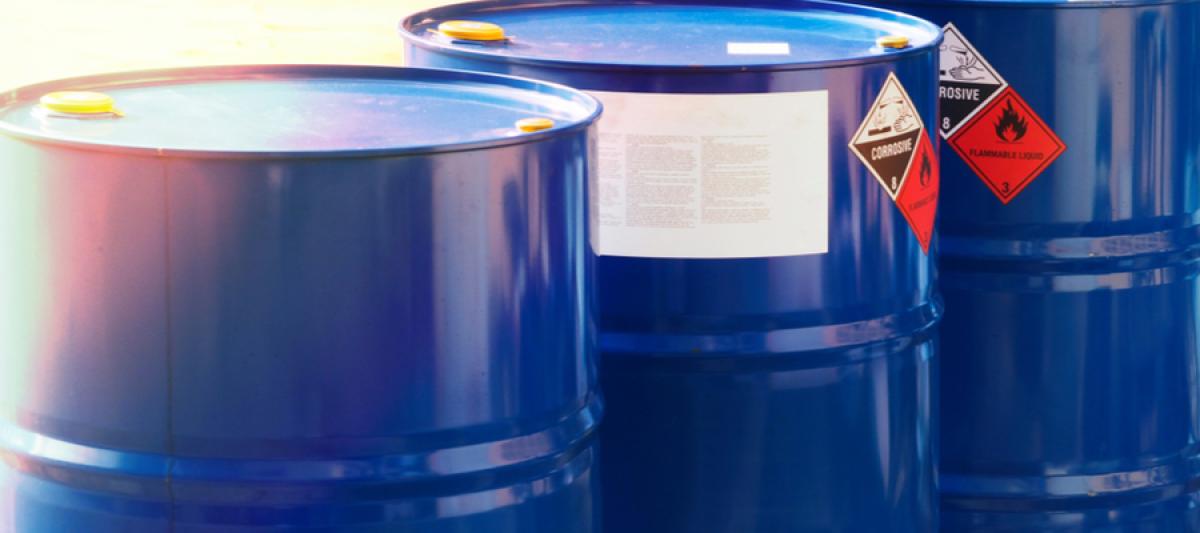
The Hazard Communication Standard (HCS) describes chemical labels as information provided through a group of written, printed, or graphic appropriate elements concerning a hazardous chemical. These should be that placed on the immediate container of a hazardous chemical. The Hazard Communication Standard also is now known as the Right to Understand Standard, requires chemical manufacturers, importers, or distributors to ensure that each container of hazardous chemicals is labeled, tagged, or marked. Employers also have a responsibility for labeling and ensuring employees are trained on hazardous chemicals.
Employer Labeling Responsibilities
Employers are responsible for maintaining the labels on containers, including, but not limited to tanks, totes, and drums. This means that labels must be maintained on chemicals in a manner that continues to be legible and the pertinent information (such as the hazards and directions for use) does not get defaced or removed in any way. If the label is lost, damaged, or becomes illegible, it is the responsibility of the employer to relabel items immediately.
Additionally, if an employer is aware of newly-identified hazards that are not disclosed on a label, the employer must ensure that the workers are aware, through training, of the associated hazards.
OSHA Workplace Labels
OSHA has not changed the general requirements for workplace labeling, but they updated the requirements for labeling of hazardous chemicals under its Hazard Communication Standard (HCS). Here are some of the key requirements to be aware of:
- All labels must have pictograms, a signal word, hazard and precautionary statements, the product identifier, and supplier identification.
- Workplace labels must be provided in English.
- Other languages should be added to the label if applicable or necessary.
Employers may use additional instructional symbols that are not included in OSHA’s HCS pictograms on the workplace labels. An example of an instructional pictogram is a person with goggles, denoting that goggles must be worn while handling the given chemical. Including both types of pictograms in the workplace, labels are acceptable.
Immediate Use Container Labels
Immediate use containers are those that will be used for a short duration, filled with a chemical for a single use. These need to be labeled with the name of the chemical, at minimum. Abbreviations or codes for immediate use containers are acceptable, permitting there is an easily-accessible key available to all employees.
Secondary Container Labels
For secondary containers that come with pre-printed labels, OSHA states that those labels will suffice if the container is used within the same shift and by the same worker. The worker also must retain possession of the container the entire time it is in use. Otherwise, employers should follow the labeling standards outlined above.
If an employer transfers hazardous chemicals from a labeled container to a portable secondary container that is only intended for immediate use by the employee who performs the transfer, no labels are required for the portable container. If the employee will not have direct control of the transferred chemical until it is exhausted, then the container must contain a label to warn other employees what the contents are. A labeled container is not a replacement for having the appropriate SDS available to the employee.
Used drink or food containers are not to be used for secondary containers since the chemical may react with the leftover residue, or employees may think what is on the label is what is in the container (i.e. sports drink) and could accidentally consume the liquid. Only use the containers provided by your employer and follow their labeling practices.
Worker Responsibilities in Container Labeling
While the bulk of container labeling responsibilities fall upon the employer, employees do still have some responsibilities. These include:
- Employees must participate in training.
- Employees must report chemical containers with missing or damaged labeling to the employer.
- Employees should not use chemicals that are not labeled appropriately.
- Employees should not use chemicals that they have not received hazard communication training.
Need help implementing OSHA standards or training your staff? Together we can make work safe! Learn more about our workplace safety services by contacting Northwest Safety and Risk Services.
